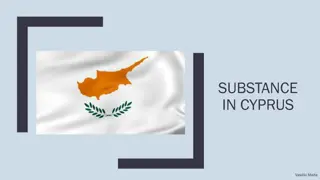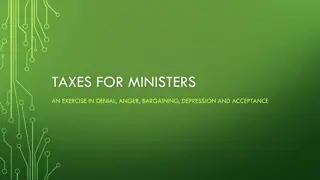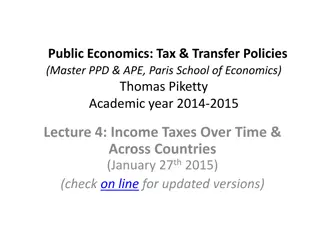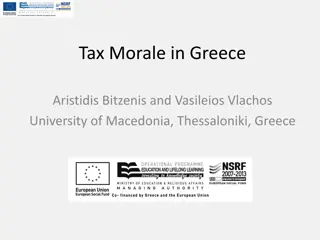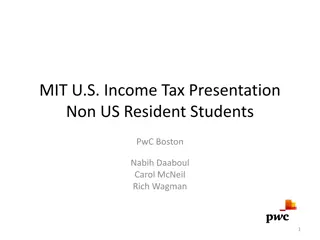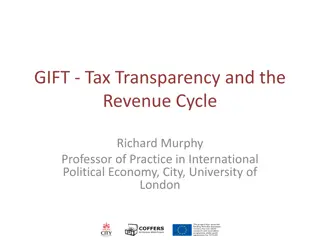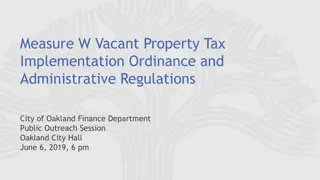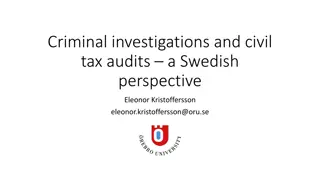Understanding Tax and Transfer Policies in Public Economics
Exploring the rationale behind taxes and transfers in public economics, this lecture delves into the objectives such as public good provision, redistribution, addressing externalities, and stabilization. It also discusses the fundamentals of welfare theorems and presents basic facts about taxes and transfers in affluent nations, shedding light on national income, GDP, and government spendings.
Download Presentation

Please find below an Image/Link to download the presentation.
The content on the website is provided AS IS for your information and personal use only. It may not be sold, licensed, or shared on other websites without obtaining consent from the author. Download presentation by click this link. If you encounter any issues during the download, it is possible that the publisher has removed the file from their server.
E N D
Presentation Transcript
Public Economics: Tax & Transfer Policies (Master PPD & APE, Paris School of Economics) Thomas Piketty Academic year 2015-2016 Lecture 1: Taxes & transfers: why & how much? (November 10th2015) (check on line for updated versions)
Basic rationales for taxes and transfers (1) Public good provision: raising tax revenue to finance public goods: defense, roads, education, health, etc. (2) Redistribution: designing taxes & transfers in order to implement a fair distribution of income, wealth and welfare (3) Externalities: Pigouvian corrective tax and subsidy schemes so to induce private agents to internalize external effects (e.g. global warming, carbon tax) (4) Stabilization: taxes & transfers can also serve as automatic stabilizers and reduce macroeconomic volatility (mostly a by-product of tax and transfer systems) Rationales (1), (3), (4) = taxes/transfers generate Pareto improvements and correspond to failures of the first welfare theorem Rationale (2) = taxes/transfers shift the economy to another (second-best) Pareto optimum (illusory lump-sum payments of the second welfare theorem)
Reminder: welfare theorems (micro 1) First welfare theorem: under standard convexity assumptions, market equilibrium = Pareto optimum (i.e. one cannot raise everybody s welfare at the same time); conversely, if these assumptions are not satisfied (non- convexities: externalities, scale economies, .), adequate govt interventions can generate Pareto improvements (i.e. can raise everybody s welfare at the same time) Second welfare theorem: all Pareto optima (all efficient redistributions) can be obtained as market equilibria under adequate lump-sum transfers; but with informational imperfections (moral hazard, adverse selection, etc.), only distortionnary taxation can redistribute resources: second- best Pareto optima
Basic facts about taxes & transfers in rich countries Total taxes T = about 40% of national income Y I.e. T = Y with = 40% Total monetary transfers YT= about 15% of national income Y (=pay-as-ou-go public pensions, unemployment & family benefits, means-tested transfers,..) Disposable household income YD= Y-T+YT= about 75% of national income Y Other government spendings = about 25% of national income = in-kind transfers. Typically: 5% education + 8-10% health + 10% police, defense, roads, etc. Social spendings: monetary transfers + education/health = around 30% of national income in rich countries (25%-35%)
Reminder: National income vs GDP National income Y = GDP capital depreciation + net foreign factor income Typically Y = about 85-90% GDP Capital depreciation = 10-15% GDP Net foreign capital income = close to 0% in most rich countries (between +1-2% & -1-2% GDP) ( = most rich countries own as much foreign assets in rest of the world as row owns in home assets)
On long-run evolution of T/Y, see this graph: in rich countries T/Y was less than 10% in the early 20c (police, defense, basic infrastructure and administration), rose enormously between 1950 & 1980, and then stabilized around 40% (with important variations between countries) On structure of spendings, see Adema et al, OECD 2011; see also Piketty-Saez 2013 Table 1 : most of the rise in T/Y is due to the rise of social spendings (transfers, education, health); the rise of the fiscal state is the rise of the social state
On structure of taxes in Europe, see Taxation Trends in the European Union , Eurostat 2013; see table of contents; see also updated tables on taxation trends website Typically: T = 1/3 indirect taxes + 1/3 direct taxes + 1/3 social contributions But: large variations between EU countries And: this decomposition is not really meaningful; what matters is the factor income decomposition (capital vs labor) and the consumption vs saving decomposition see Lecture 2 on tax incidence Large variations in tax levels: see rich vs poor EU countries Large variations in tax mix: EU 27 vs France, Germany, Denmark, Sweden, Luxembourg, Norway, Bulgaria
In poor countries: T = as low as 10%-15% of national income Y (and stagnating: declining trade tax revenues were not replaced by more modern income or value added taxes) See Cage-Gadenne 2012, "The Fiscal Cost of Trade Liberalization", Figure 1 See also Latin America Revenue Statistics (large differences, e.g. Mexico-Chile vs Argentina-Brasil)
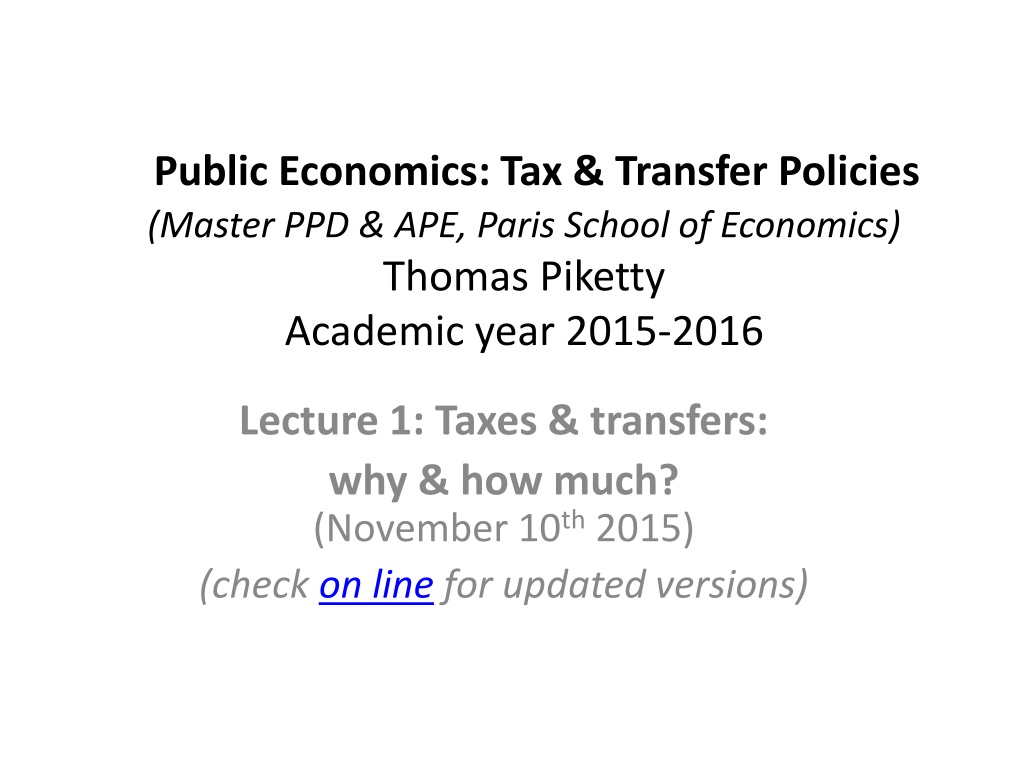



![Town of [Town Name] Real Estate Tax Rates and FY 2024 Budget Summary](/thumb/62211/town-of-town-name-real-estate-tax-rates-and-fy-2024-budget-summary.jpg)



